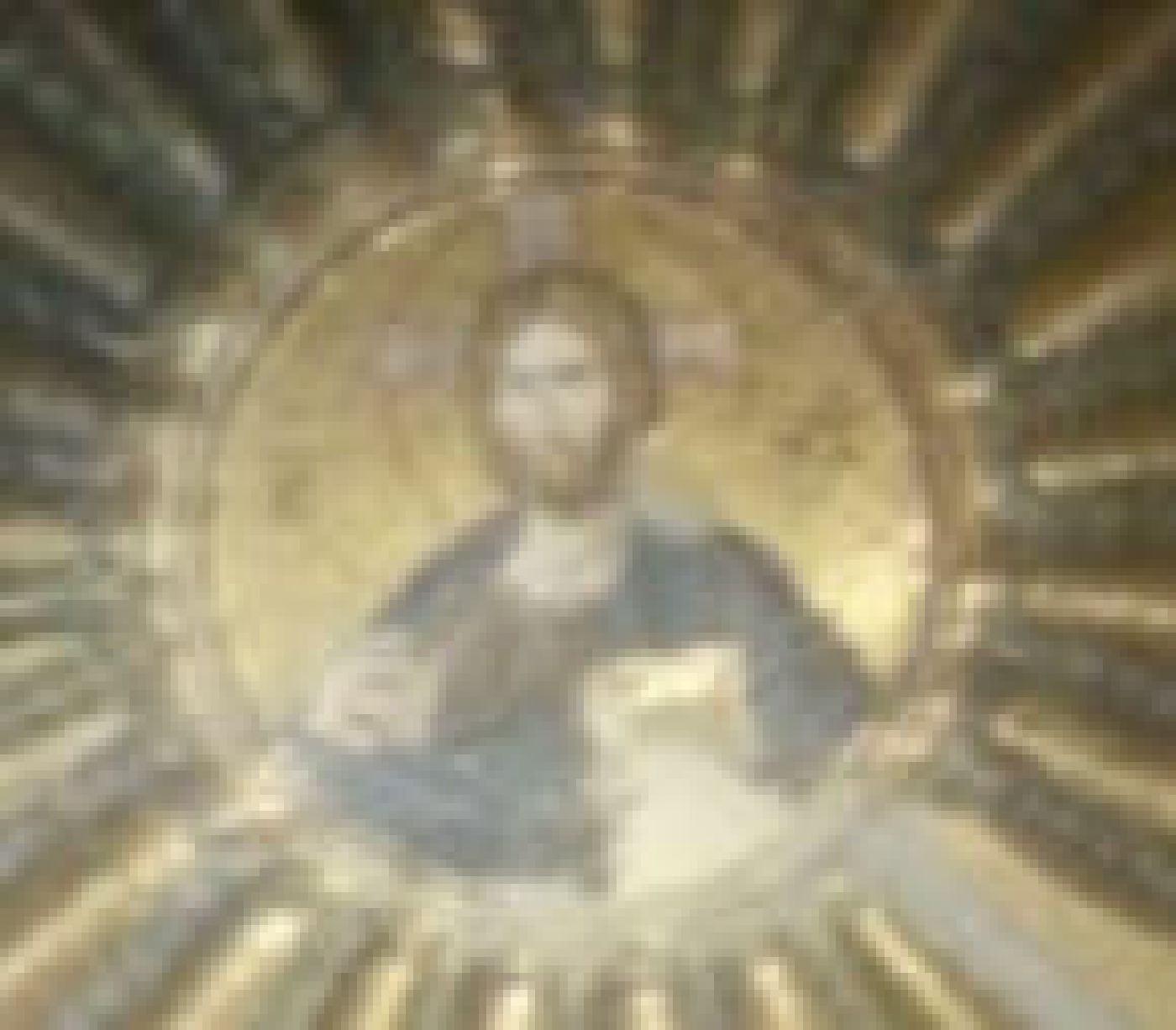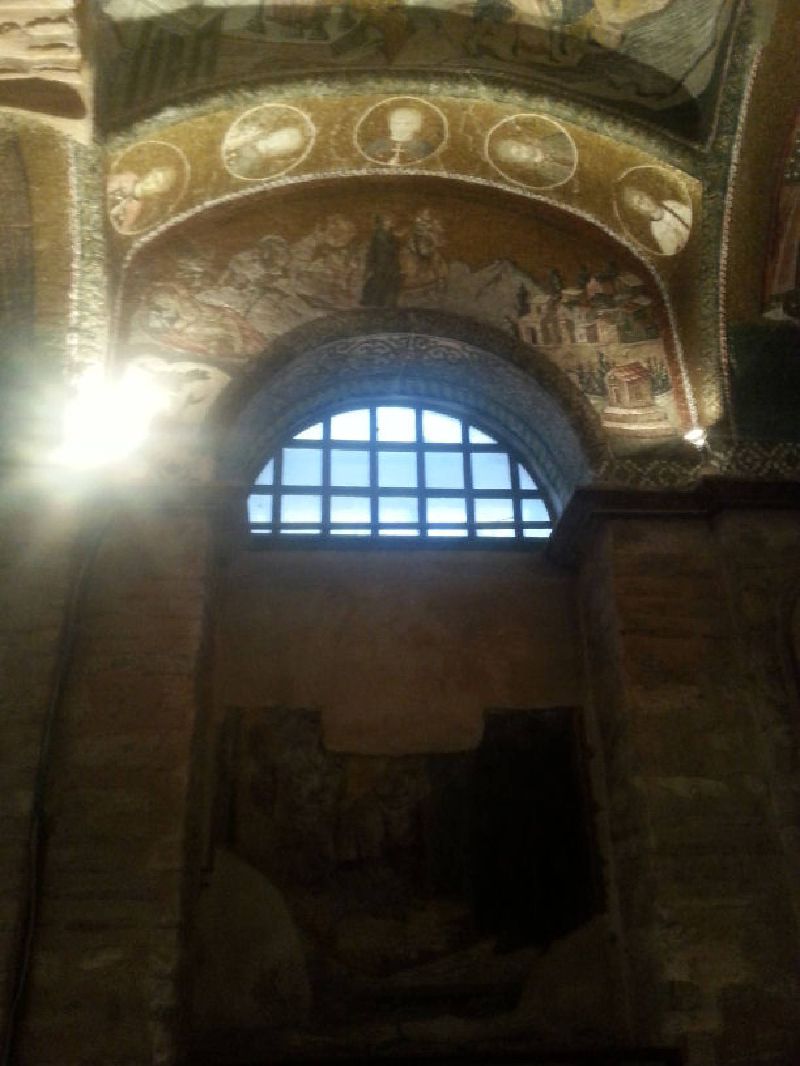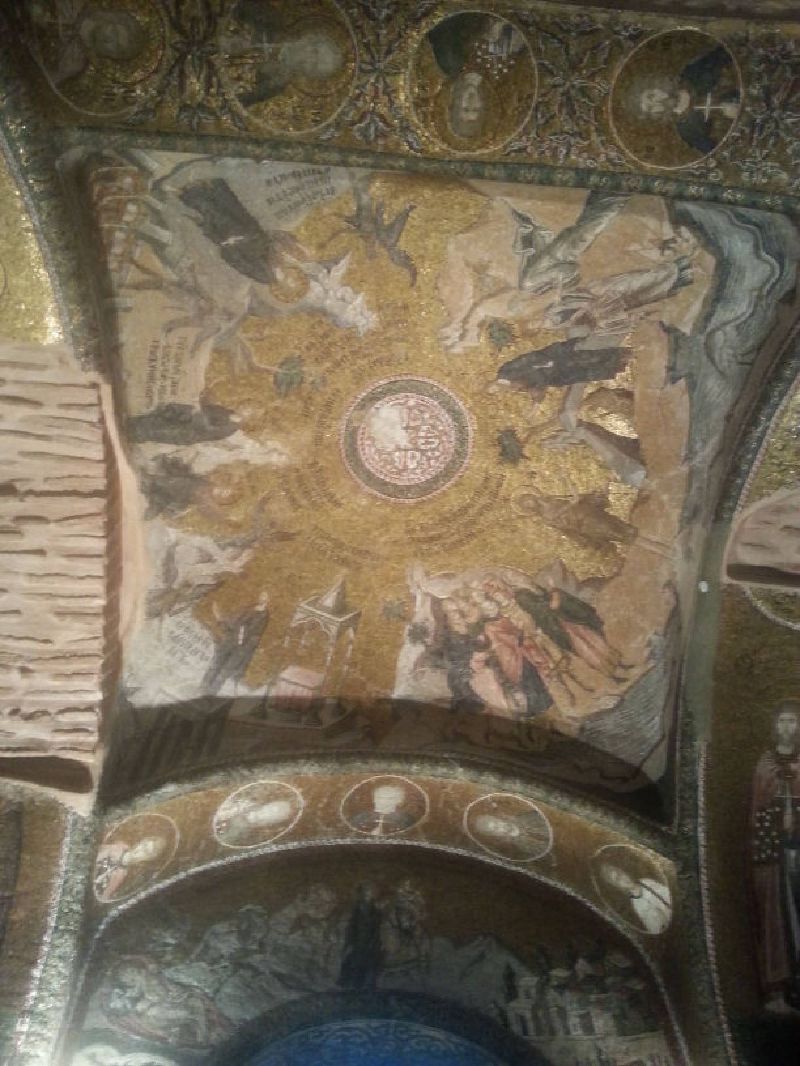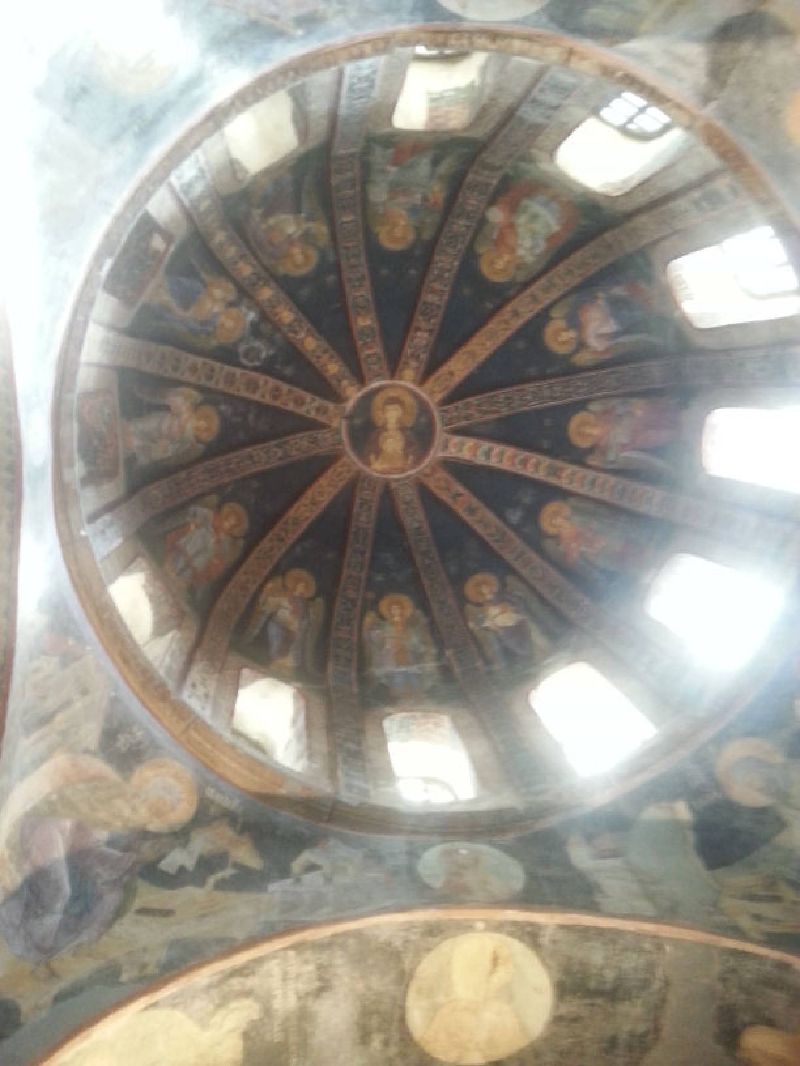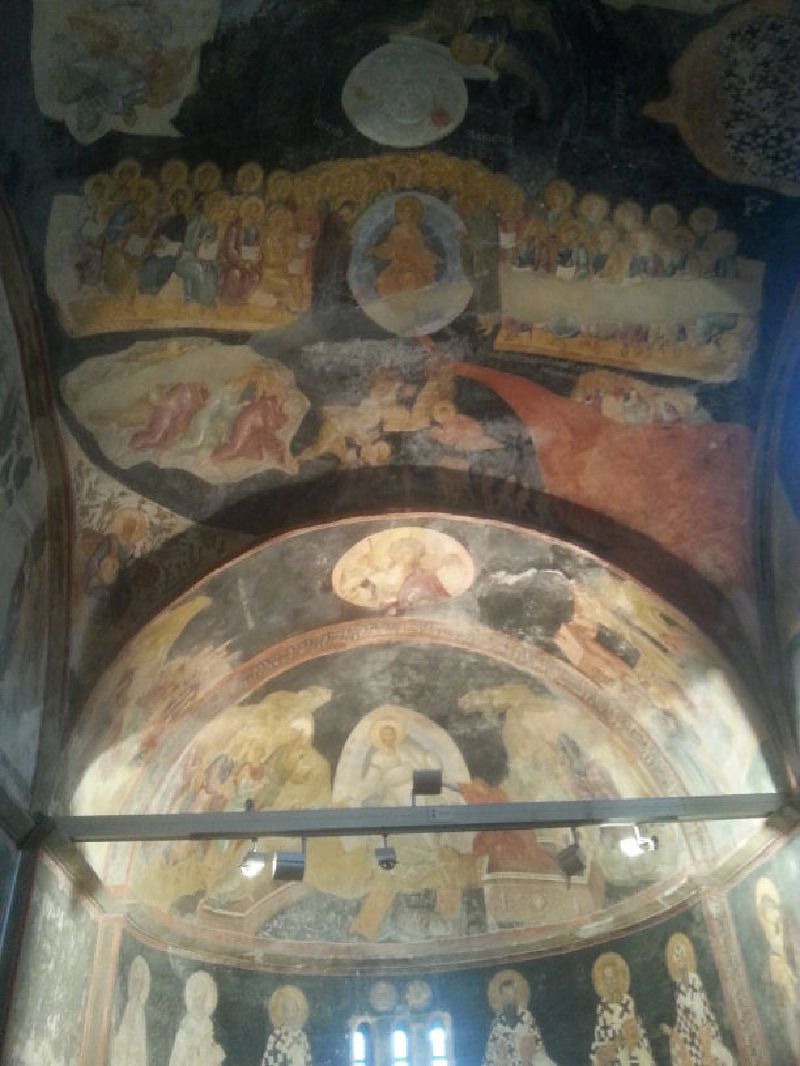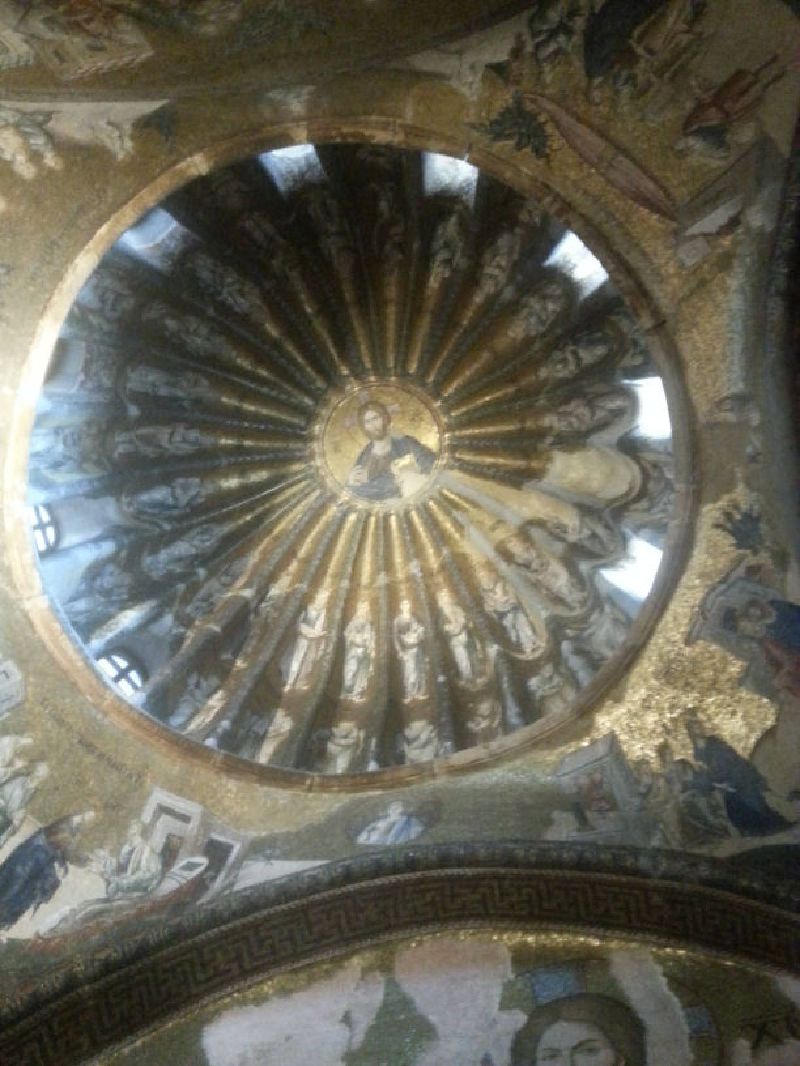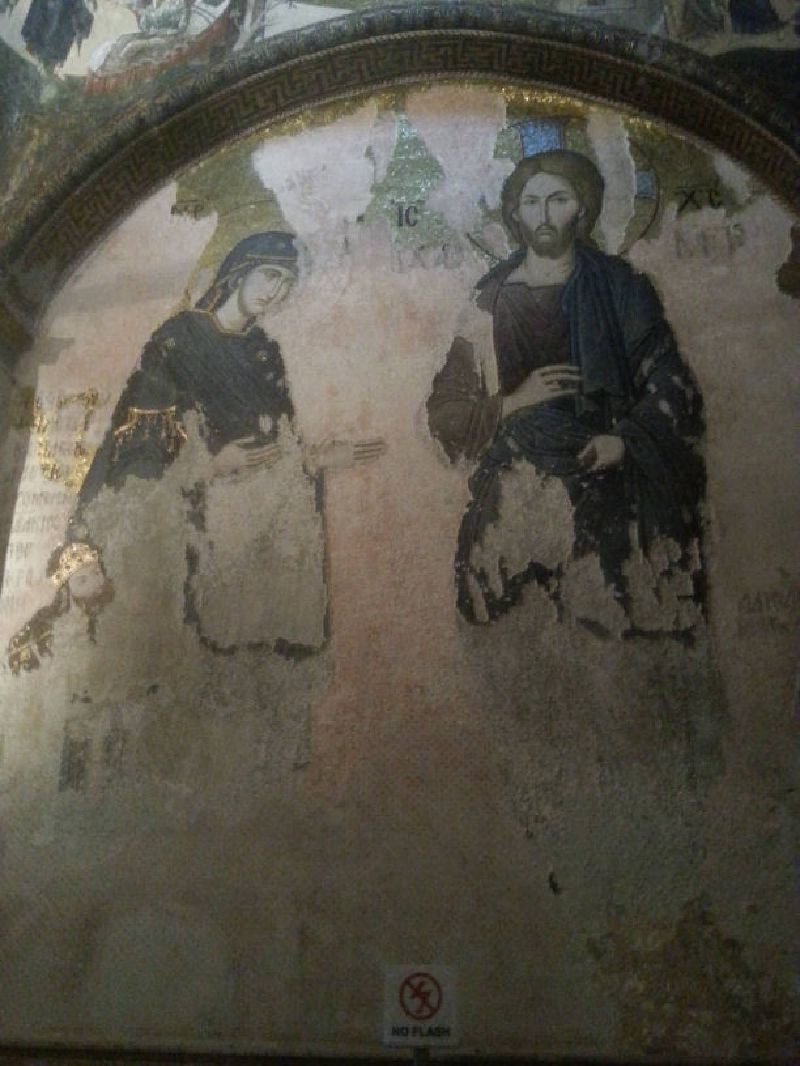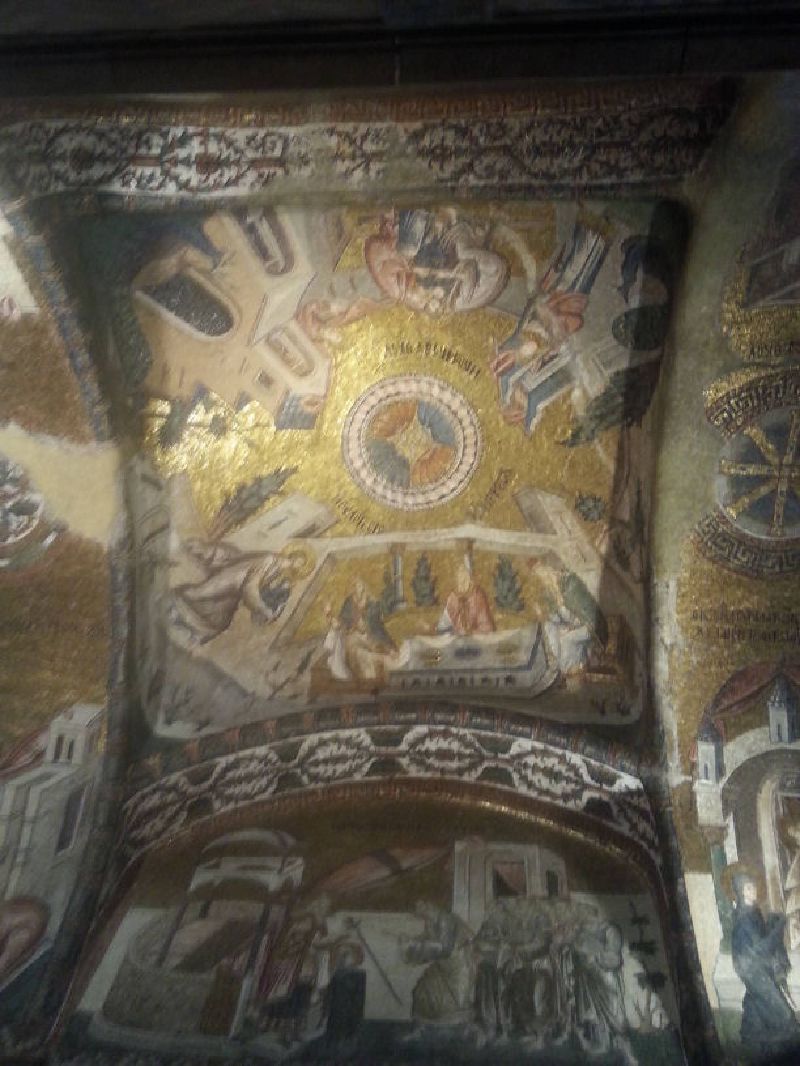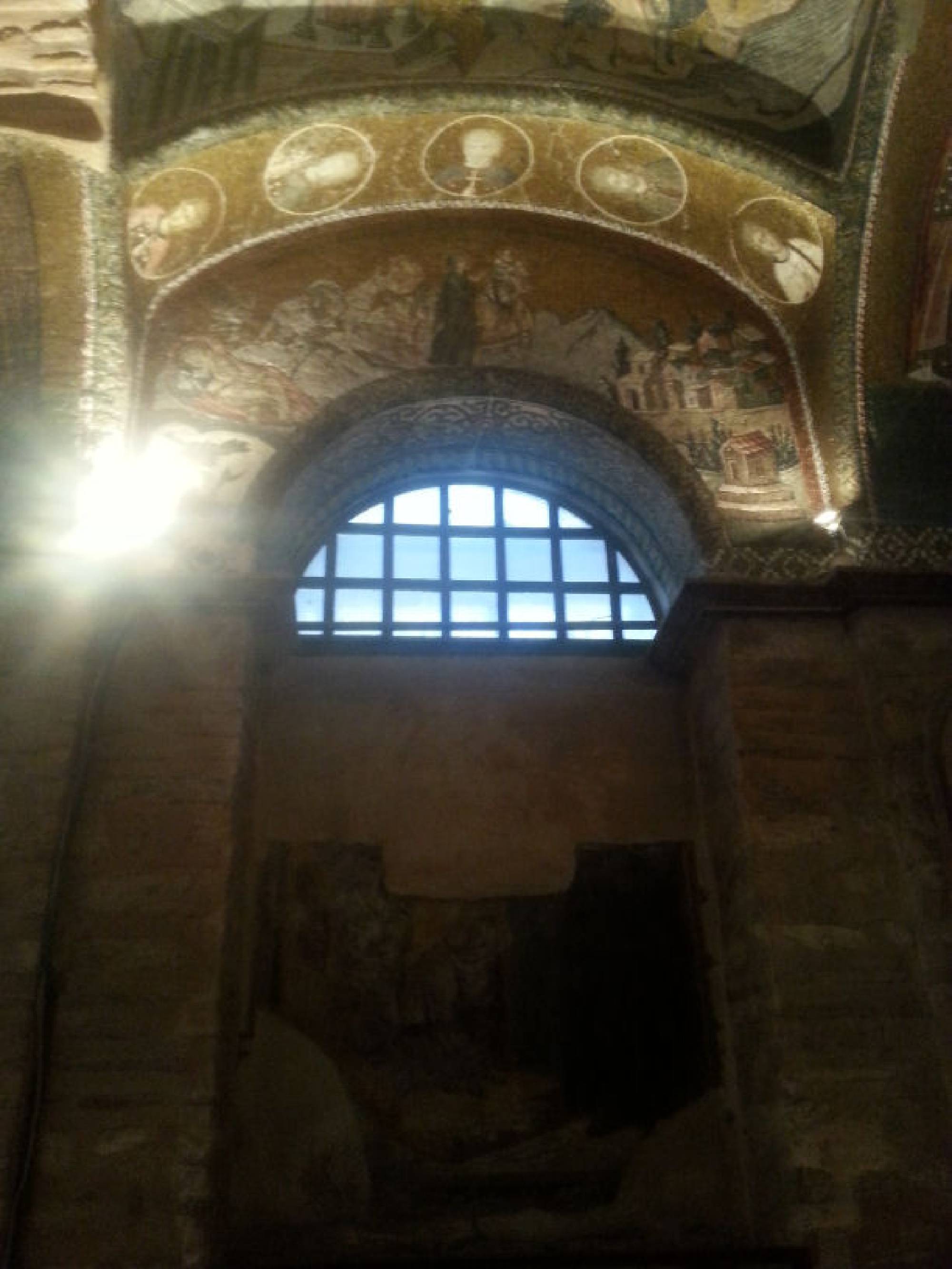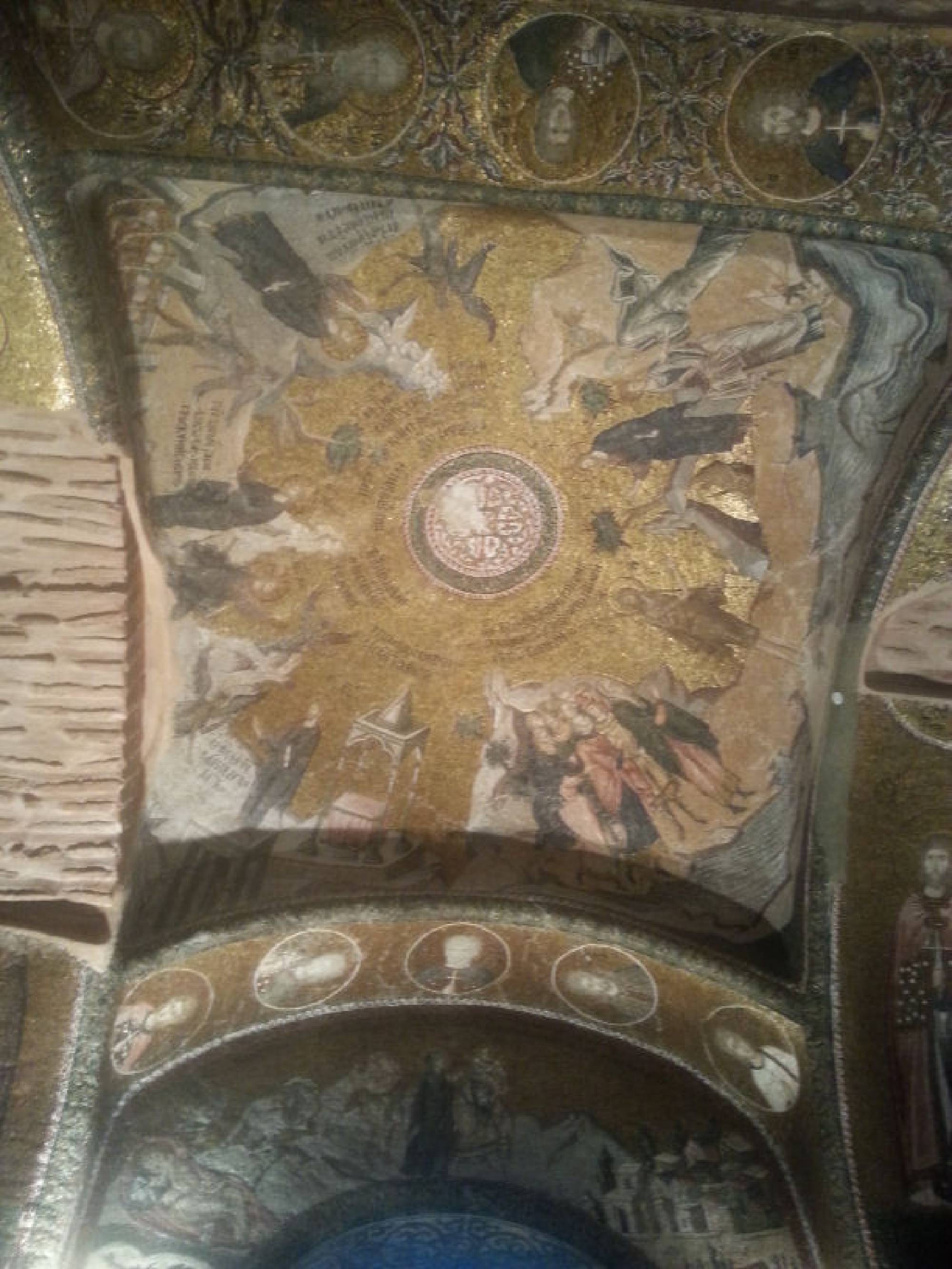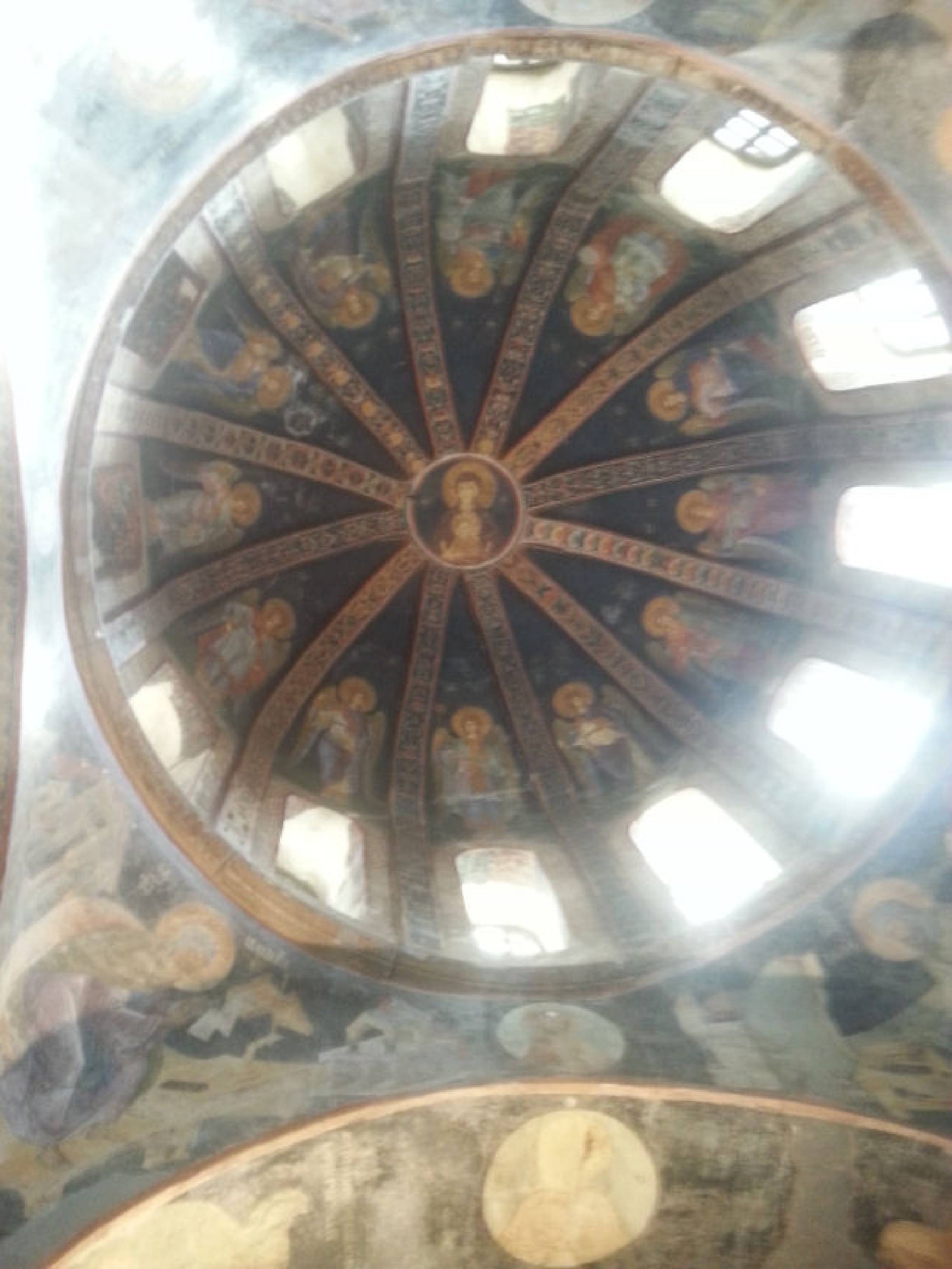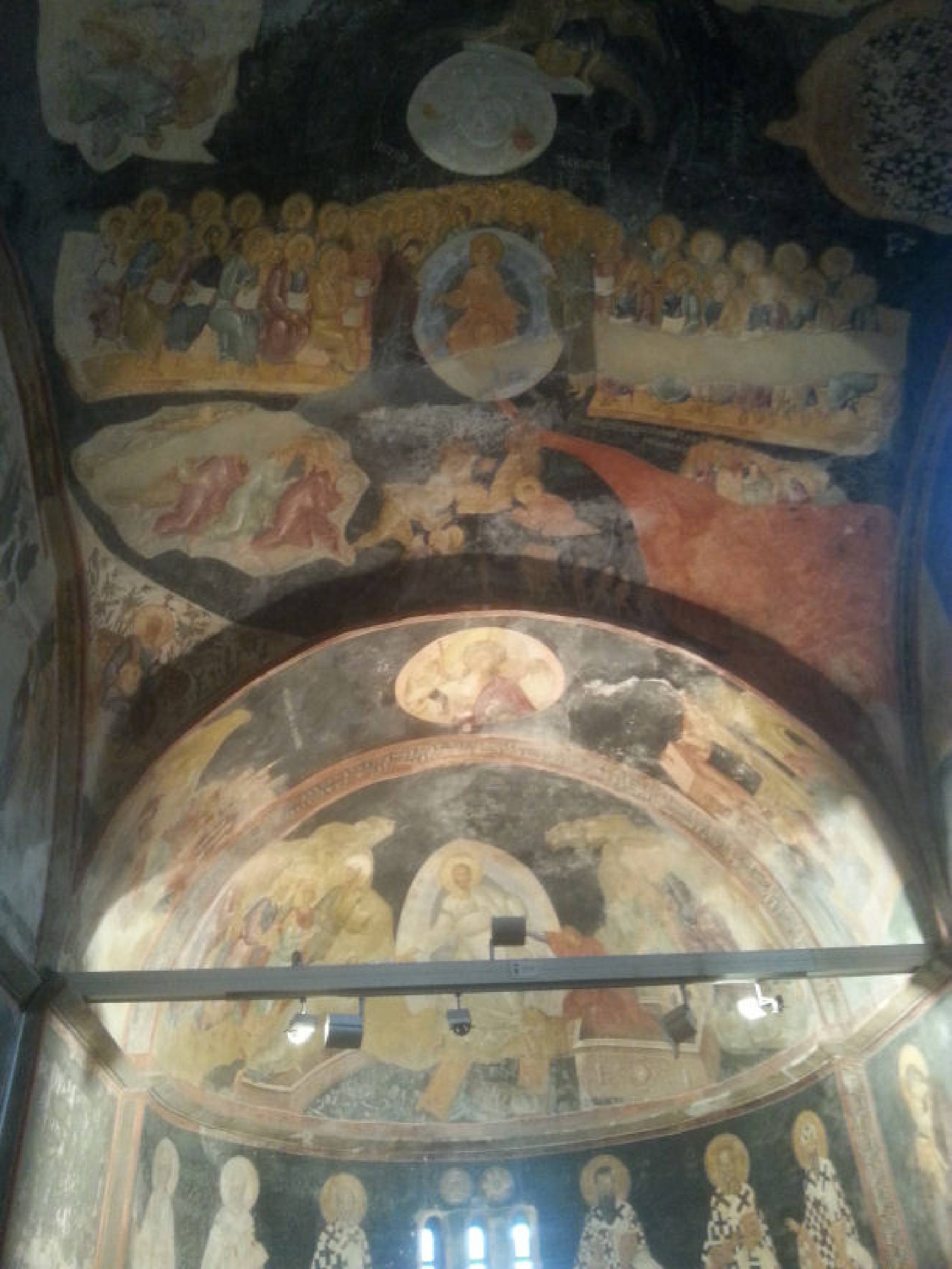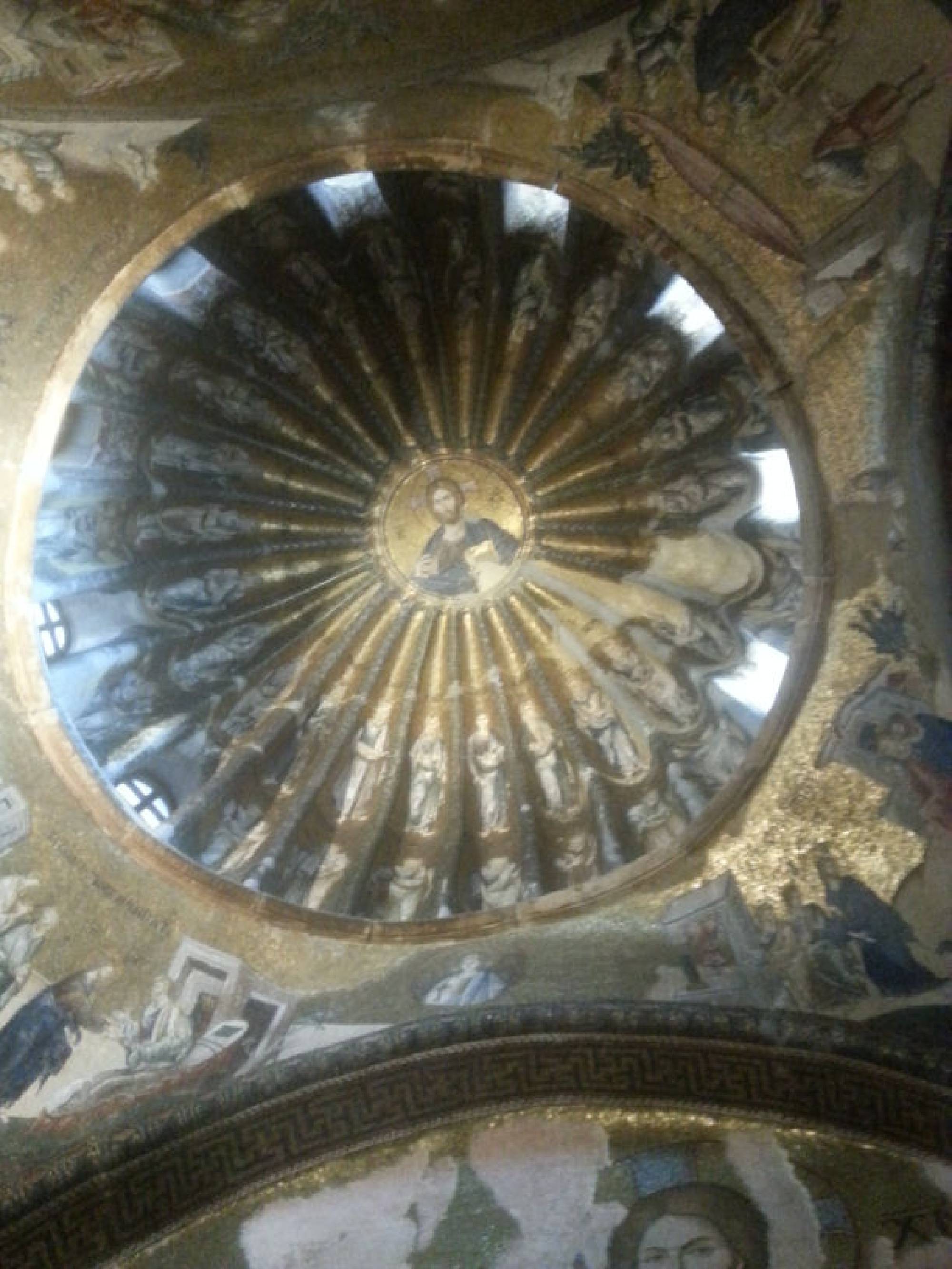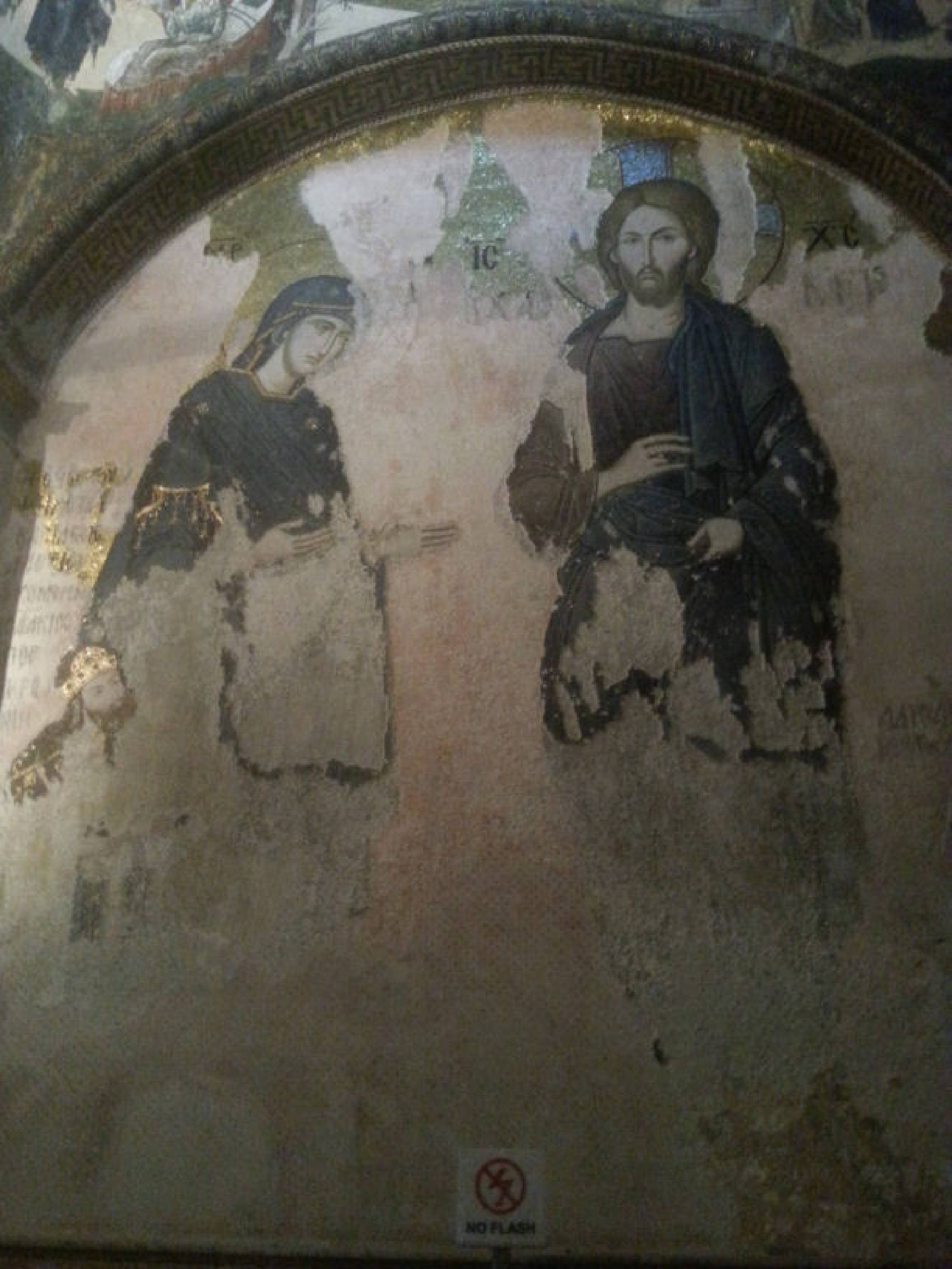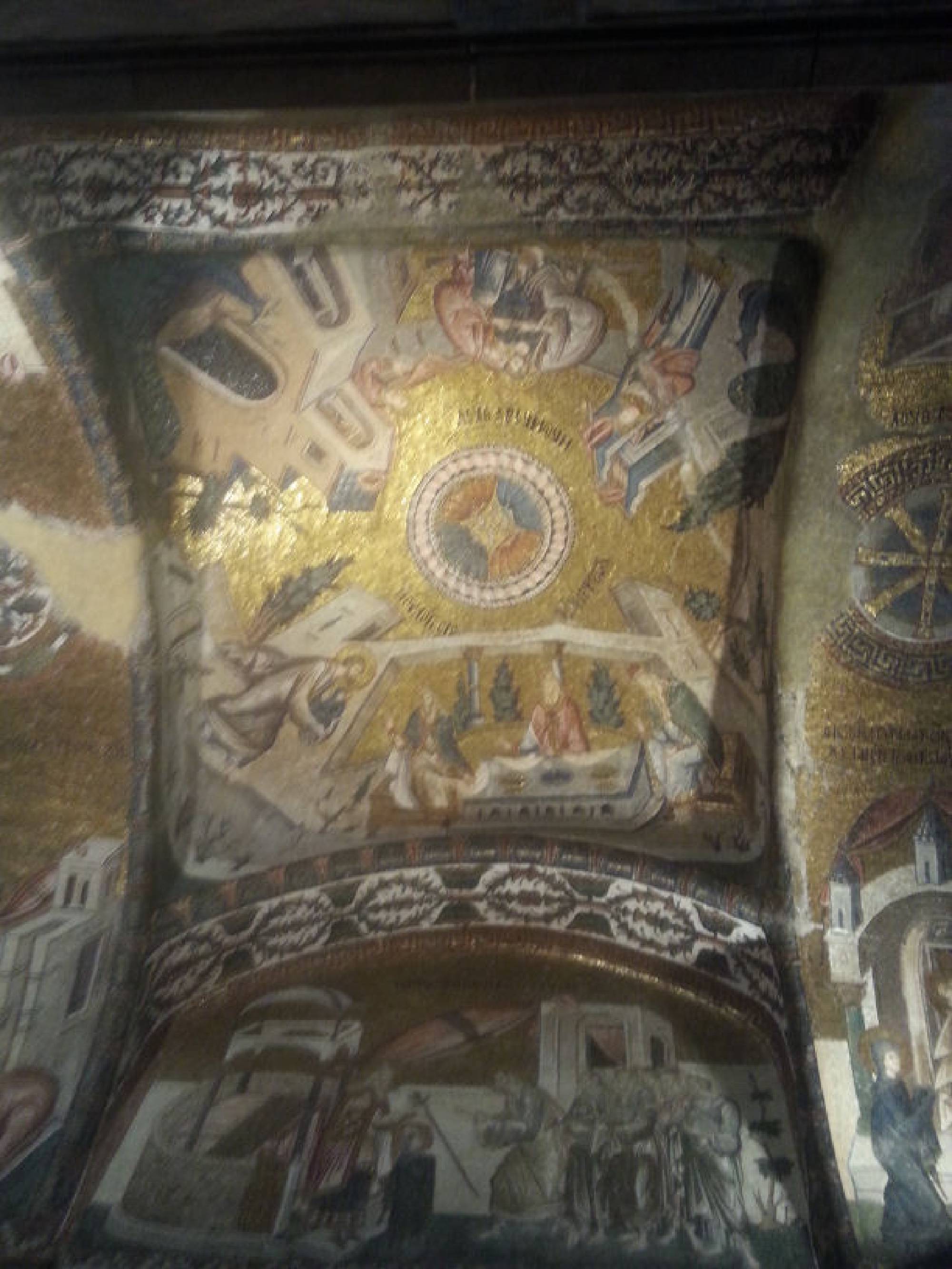It's a funny place. Like the Haghia Sophia, the Church of St Saviour is a museum. They make that pretty clear. It's a museum, not a church. It's got a gift shop and glass cases and, most importantly, spotlights. In the Haghia Sophia you get a feel for how it must have been. It's dark and atmospheric and when you look up the cherubs on the piers are terrifying as they loom out of the gloom at you.
St Saviour doesn't have much natural light. It would have been dark, lit by candles and oil lamps. Flickering, living light. The gold would have shimmered and almost moved. The images would have come in and out of focus through clouds of smoke and incense. In use, it would have been a moving vision for anyone who saw it. Today, it is lit as a museum, the mosaics and frescoes are exhibits, pure and simple. No attempt is made to be sensitive to its original appearance, just spotlight it and let the tourists stare.
The end result is boring. Sure, it is beautiful. But it is dead. You might as well just look at a picture in a book. A lot of the church is off limits too, apparently for "restoration". I got there and I just wanted to shuffle round, gawp, take a few pictures and get out. I'm an atheist but the Haghia Sophia moved me with it's dark grandeur, Haghia Eirene with its stark simplicity. At St Saviour, it was just, well, I've done it. What's next?
It took me a while to work out what else bothered me. Later in the day when I was reading my guidebook. St Saviour was a mediaeval building. I just assumed it was from the same era as the Haghia Sophia. The mosaics and frescoes, they were even later from the 1300's.
In Europe, that was the start of the Renaissance. This was the time of Giotto. The paint was barely dry on the frescoes when the Van Eyck brothers were starting the Ghent Altarpiece, maybe one of the greatest paintings of all time. BY comparison, these are clumsy and heavy. When European painters were discovering new techniques and new styles, the Byzantines were producing art that had not changed in almost a thousand years. The artworks in St Saviour look no different to the ones in the Haghia Sophia despite being centuries apart. When I found out the paintings and mosaics had been done in the 1300's it really surprised me because it showed no progress from those done in the 600's.
It highlights why Byzantium declined. It was a place stuck in the past, holding on to a golden age of Roman emperors and great generals like Belisarius. I almost felt cheated. To put it into perspective, we are as close in time to the artists of St Saviour's as they were to those who decorated the Haghia Sophia. That's not a society that had a future. A hundred years later they had been over-run. As sad as it was that Constantinople fell, it was like shooting a knackered old horse in the head.
I took my pictures and went back outside into the sunshine. I sat on some steps for a few minutes and then went for a wander in the narrow streets. Heading toward the Fethiye mosque.
I liked this part of the city. This was not the tourist area. The streets were narrow and full of graffiti, cars parked wherever there was space. I felt uncomfortable for a while because I felt so out of place. But then I realised I was choosing to feel out of place. No-one cared. People were just getting on with their lives and once out of range of the hawkers near the church, no-one bothered me. Istanbul is an easy city to pretend you are on a Jason Bourne adventure in but most of it, or at least most of the places you are likely to end up in (and at least in daylight), seem reasonably safe.
